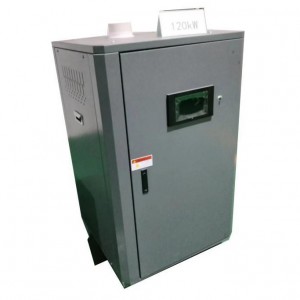- Afrikaans
- Albanian
- Amharic
- Arabic
- Armenian
- Azerbaijani
- Basque
- Belarusian
- Bengali
- Bosnian
- Bulgarian
- Catalan
- Cebuano
- China
- China (Taiwan)
- Corsican
- Croatian
- Czech
- Danish
- Dutch
- English
- Esperanto
- Estonian
- Finnish
- French
- Frisian
- Galician
- Georgian
- German
- Greek
- Gujarati
- Haitian Creole
- hausa
- hawaiian
- Hebrew
- Hindi
- Miao
- Hungarian
- Icelandic
- igbo
- Indonesian
- irish
- Italian
- Japanese
- Javanese
- Kannada
- kazakh
- Khmer
- Rwandese
- Korean
- Kurdish
- Kyrgyz
- Lao
- Latin
- Latvian
- Lithuanian
- Luxembourgish
- Macedonian
- Malgashi
- Malay
- Malayalam
- Maltese
- Maori
- Marathi
- Mongolian
- Myanmar
- Nepali
- Norwegian
- Norwegian
- Occitan
- Pashto
- Persian
- Polish
- Portuguese
- Punjabi
- Romanian
- Russian
- Samoan
- Scottish Gaelic
- Serbian
- Sesotho
- Shona
- Sindhi
- Sinhala
- Slovak
- Slovenian
- Somali
- Spanish
- Sundanese
- Swahili
- Swedish
- Tagalog
- Tajik
- Tamil
- Tatar
- Telugu
- Thai
- Turkish
- Turkmen
- Ukrainian
- Urdu
- Uighur
- Uzbek
- Vietnamese
- Welsh
- Bantu
- Yiddish
- Yoruba
- Zulu
Верас . 29, 2024 04:39 Back to list
Single Pass Heat Exchanger Design and Performance Analysis for Efficient Thermal Transfer
Understanding Single Pass Heat Exchangers A Comprehensive Overview
Heat exchangers are essential components in various industrial processes, serving the critical function of transferring heat from one fluid to another without mixing the two. Among the different types of heat exchangers, single pass heat exchangers play a prominent role due to their simplified design and efficiency in specific applications. In this article, we will delve into the principles, advantages, applications, and considerations associated with single pass heat exchangers.
What is a Single Pass Heat Exchanger?
A single pass heat exchanger is a type of heat exchanger where the hot and cold fluids pass through the exchanger only once. In this design, the fluids flow in parallel or counterflow paths, allowing for efficient heat transfer due to a direct contact between the hot and cold fluids. Because each fluid only passes through the heat exchanger one time, the complexity of design and construction is reduced compared to multi-pass systems, where fluids might circulate multiple times.
Principles of Operation
The operation of a single pass heat exchanger is based on the principles of thermodynamics and heat transfer. As the hot fluid enters the exchanger, it transfers its thermal energy to the cooler fluid flowing in the opposite direction or alongside it. The temperature difference between the two fluids drives the heat transfer process, with heat moving from the hotter to the cooler fluid. The efficiency of this transfer is influenced by several factors, including the flow rates of the fluids, their specific heat capacities, and the surface area of the heat exchange material.
Advantages of Single Pass Heat Exchangers
1. Simplicity of Design Single pass heat exchangers have a straightforward design, consisting of fewer components than multi-pass models. This simplicity often leads to lower manufacturing and maintenance costs.
2. Low Pressure Drop Because the fluids pass through the exchanger only once, single pass designs typically exhibit lower pressure drops compared to their multi-pass counterparts. This feature is particularly beneficial in applications where maintaining pressure is critical.
3. Easier Cleaning and Maintenance With fewer components and a simpler layout, single pass heat exchangers are usually easier to clean and maintain. This can reduce downtime and enhance operational efficiency.
heat exchanger single pass

4. Effective for Certain Applications Single pass heat exchangers are particularly well-suited for processes where the temperature change required is not extreme or where the heat transfer demands can be met with a single pass of fluid.
Applications of Single Pass Heat Exchangers
Single pass heat exchangers are utilized across numerous industries, including
- Chemical Processing They are commonly employed in heating or cooling chemical reactions, where precise temperature control is vital. - Food and Beverage Industry In food processing, they can be used to pasteurize liquids or for cooling products without compromising hygiene.
- Power Generation In steam generation and cooling processes, single pass heat exchangers help to manage thermal energy efficiently.
- HVAC Systems They are also found in heating, ventilation, and air conditioning systems to optimize thermal comfort in buildings.
Considerations and Limitations
While single pass heat exchangers offer many advantages, there are certain limitations to consider. The primary limitation is that they might not be suitable for processes requiring extreme heat exchange or very low outlet temperatures. In such cases, a multi-pass heat exchanger may be necessary to achieve the desired thermal performance. Moreover, the single pass design may not be efficient in situations where there are varying flow rates or properties in the fluids.
Conclusion
Single pass heat exchangers represent a crucial technology in thermal management across various industries. Their simplicity, efficiency, and lower operational costs make them an attractive choice for specific applications where less complex heat exchange is needed. By understanding their principles of operation, advantages, applications, and limitations, engineers and designers can make informed decisions when selecting heat exchangers for their processes. As industries continue to prioritize energy efficiency and sustainability, the demand for effective heat exchange solutions, including single pass heat exchangers, is poised to grow.
-
8mm Thin-Walled Cast Steel Manhole Cover Pallet Bottom Ring | Durable
NewsAug.04,2025
-
Premium Cast Iron Water Main Pipe: Durable, Corrosion-Resistant
NewsAug.03,2025
-
Durable Cast Iron Water Mains | AI-Optimized Systems
NewsAug.02,2025
-
High-Efficiency Propane Boiler for Baseboard Heat | Save Energy
NewsAug.01,2025
-
Premium Source Suppliers for Various Gray Iron Castings
NewsJul.31,2025
-
Durable Cast Iron Water Main Pipes | Long-Lasting
NewsJul.31,2025


